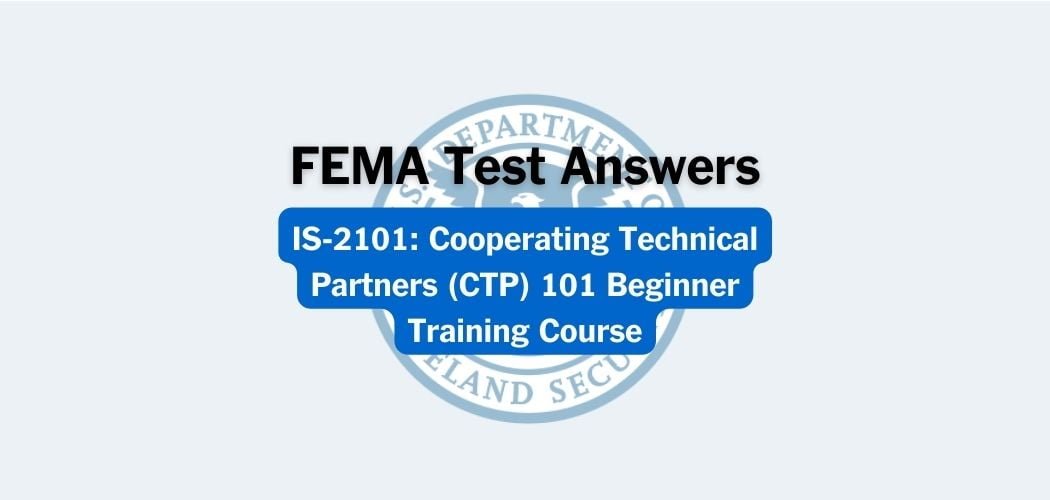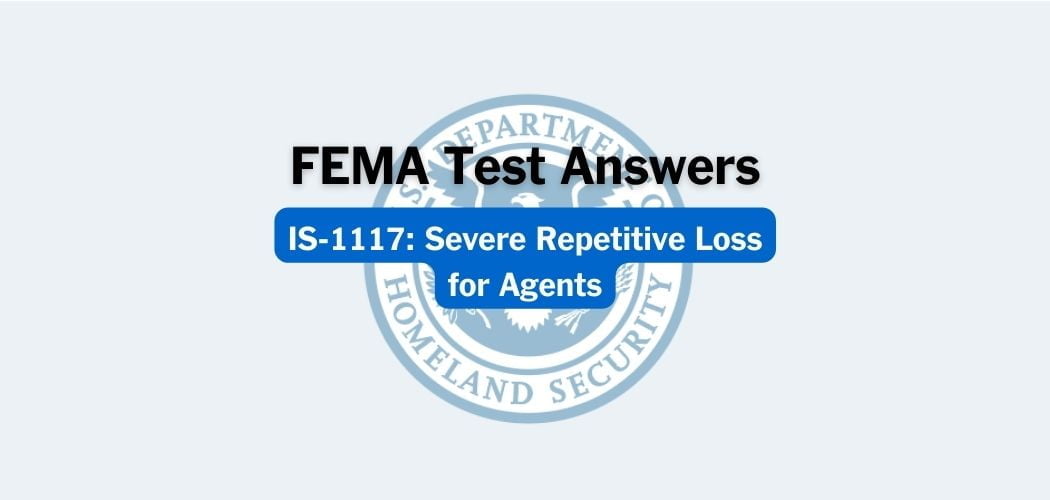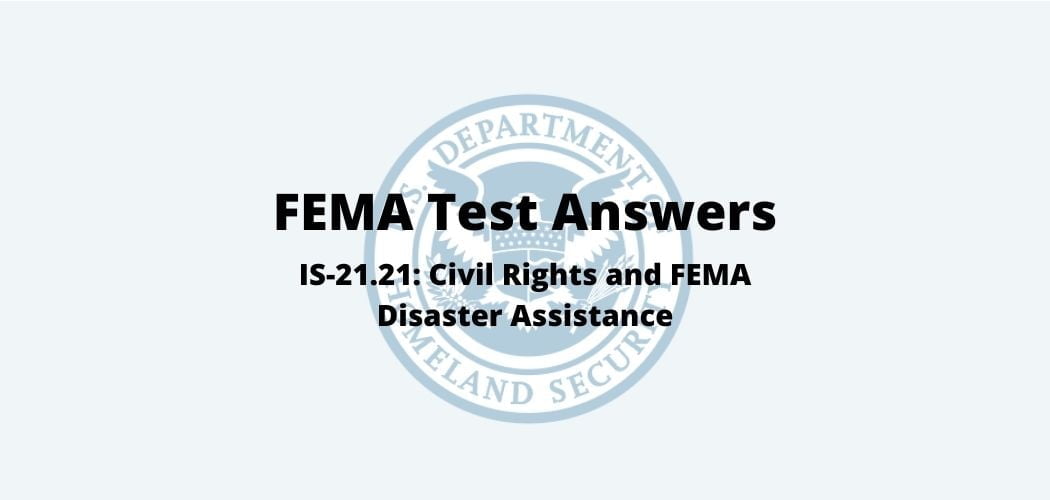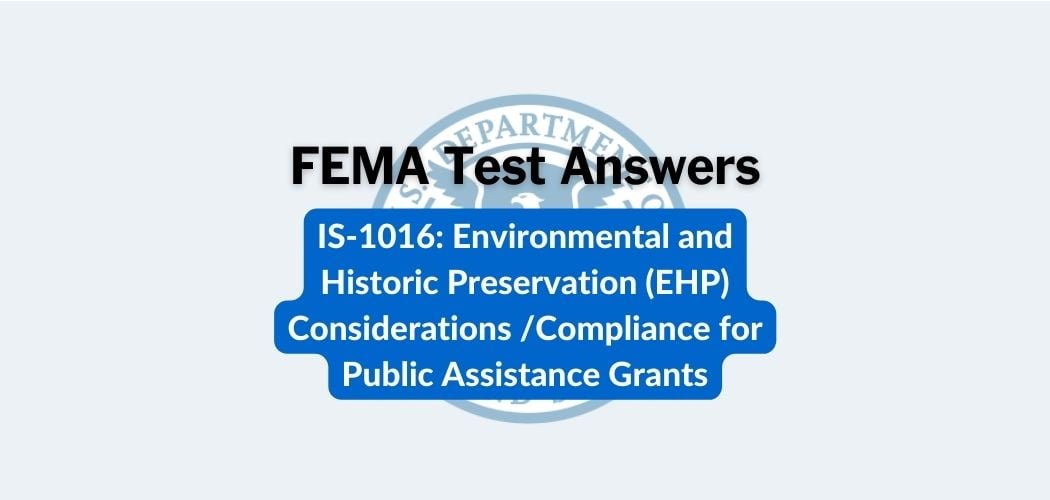Overview: The FEMA IS-703.B course was published on 5/4/2020 for the National Incident Management System Resource Management to introduce federal, state, local, tribal, and territorial emergency managers, first responders, and incident commanders from all emergency management disciplines to NIMS Resource Management. This includes private industry and volunteer agency personnel responsible for coordination activities during a disaster.
Primary audience: FEMA IS-703.B is for federal, state, local, tribal, and territorial emergency managers, first responders, and incident commanders from all emergency management disciplines. This includes private industry and volunteer agency personnel responsible for coordination activities during a disaster. It is recommended to take IS-700, An Introduction to the National Incident Management System.
FEMA IS-703.B test answers
Each time this test is loaded, you will receive a unique set of questions and answers. The test questions are scrambled to protect the integrity of the exam.
Question 1. The first step in managing resources during an incident is to identify requirements. To do so, an Incident Commander should:
A. Delegate resource prioritization decisions to the Finance and Administration Section Chief to ensure prudent use of resources.
B. Request that the Logistics Section develops a proposed staffing plan for the incident based on the Incident Action Plan.
C. Conduct a thorough assessment, or size up, of the current incident situation and future incident potential.✅
D. Establish incident objectives based on the resources that are currently available at the scene.
Question 2. The NIMS qualification, certification, and credentialing process uses a(n) _______ approach.
A. compensation
B. performance-based✅
C. incident-based
D. experience
Question 3. Preparedness organizations develop standard _______ to request resources, prioritize requests, activate and mobilize resources to incidents and return resources to normal status.
A. Protocols✅
B. Terminology
C. Staffing
D. Software
Question 4. The key to effective management of donations is to:
A. Assign the Staging Manager within the Operations Section the responsibility for donation tracking.
B. Develop public information and media releases to help prevent communities and voluntary groups from collecting donations.✅
C. Have a pre-incident plan in place for soliciting, gathering, prioritizing, and distributing appropriate donations.
D. Increase the amount of donations by delegating the donation solicitation and management to a volunteer committee.
Question 5. Which characteristic is true of credentialing?
A. Increases complexity when ordering personnel resources
B. Makes ordering personnel resources easier✅
C. Acts as a barrier to integration of outside personnel
D. Causes inconsistencies with resource capability
Question 6. The ________ is a guide to how the Nation responds to all types of disasters and emergencies.
A. National Planning Guide
B. National Response Framework (NRF)✅
C. Jurisdictional SOPs
D. National Incident Management System (NIMS)
Question 7. Select the preferred method for placing orders.
A. A single-point resource ordering system where the burden of finding the requested resources is placed on the responsible jurisdiction/agency dispatch/ordering center rather than the incident organization.✅
B. A flexible resource ordering system whereby the incident is responsible for locating and acquiring resources from multiple sources rather than contacting a single, centralized ordering support function.
C. A fully automated resource-ordering system that avoids the need for radio communications or verbal orders being placed from the incident scene to an ordering center or source.
D. A self-dispatching system that identifies resources in advance of an incident and provides them with explicit instructions on how and when to self-dispatch in anticipation of a need at the incident scene.
Question 8. Which Homeland Security Presidential Directive required the establishment of the National Incident Management System?
A. HSPD-7, Critical Infrastructure Identification, Prioritization, and Protection✅
B. HSPD-8, National Preparedness
C. Presidential Policy Directive 8 (PPD-8), National Preparedness
D. HSPD-5, Management of Domestic Incidents
Question 9. Resource typing is a _______ process designed to be as _________ as possible to facilitate frequent use and accuracy in obtaining needed resources.
A. local; regulated
B. continuous; simple✅
C. defined; rigid
D. complex; broad
Question 10. Incident resource information management systems are used to collect, update, and process resource data and?
A. Develop capital budgets for acquisition of new resources.
B. Project when inventory items need to be ordered.
C. Track status and location of resources.
D. Alert personnel when credentials are about to expire.✅
Question 11. Which of the following is not a resource consideration for incident facilities discussed in this course?
A. Access
B. Security
C. Long-term Lease✅
D. Parking
Question 12. Which of the following is NOT a recommended strategy for State and Federal Deployment?
A. Ensure that statewide mutual aid agreements include instructions on staging, and specify support expected from the host jurisdiction.
B. Plan for the use of Unified Command and interdisciplinary tactical operations.
C. Encourage groups to provide unsolicited donations to compensate for limited resources.✅
D. Build relationships with State and Federal officials likely to respond to complex incidents by training and exercising together
Question 13. Private-sector partners are responsible for:
A. Keeping all resources for private-sector use only
B. Evacuation of surrounding populace
C. Financing governmental response measures
D. Protecting their employees in the workplace✅
Question 14. __________ guides all levels of government, nongovernmental organizations (NGO), and the private sector to work together to prevent, protect against, mitigate, respond to, and recover from incidents.
A. Incident Command System (ICS)
B. Homeland Security Presidential Directive (HSPD)
C. National Incident Management System (NIMS)✅
D. National Response Framework (NRF)
Question 15. Common resources fall into five general groupings. They include __________, Teams, Facilities, Equipment, and Supplies.
A. Vehicles
B. Kind
C. Personnel✅
D. Type
Question 16. According to the HSEEP, as the level of capabilities exercised is increased, what else increases?
A. The commitment needed for planning and training time✅
B. Number of policies required
C. Interagency agreements
D. Lead time between discussion-based and operations-based exercises
Question 17. Not all training occurs in a classroom. The best approach to a training need will vary based on the _______ and ________ to be acquired.
A. equipment; resources
B. exercise; scope
C. skills; capabilities✅
D. time; funds
Question 18. Regarding resource typing, which of the following characteristics are typically used to categorize resources?
A. Location
B. Color
C. Number available
D. Capability✅
Question 19. The resource management planning process includes the following activities:
Activity 1: Identify Threats and Vulnerabilities of the Jurisdiction
Activity 2: Identify Resource Requirements
Activity 3: Develop Strategies to Obtain Resources
Activity 4: Review Resource Management Procedures
Activity 5: _______ (Select the fifth Activity)
A. Activity 5: Identify Emerging Technologies
B. Activity 5: Acquire, Store, and Inventory Resources✅
C. Activity 5: Collect Stakeholder Feedback on Priorities
D. Activity 5: Develop Equipment Reserve Budgets
Question 20. The resource management process is a sequence of tasks for a resource; during an incident, it is possible that?
A. Step 1: Identify Requirements, will not be necessary.
B. Separate resources will be at different points in the sequence of resource tasks.
C. All steps of the process will be accomplished in random order.
D. Demobilization of resources cannot be done until all order is completed.✅
Question 21. During an incident, getting the right resources, to the right place, at the right time is the goal of?
A. Credentialing
B. NIMS Resource Management✅
C. Community Lifelines
D. National Response Framework
Question 22. Which activity in the resource management planning process may be used by organizations to analyze their potential needs for resources?
A. Review Resource Management Procedures
B. Acquire, Store, and Inventory Resources✅
C. Develop Strategies to Obtain Resources
D. Identify Threats and Vulnerabilities of the Jurisdiction
Question 23. What term is used to refer to broad classes that characterize like resources, such as personnel, teams, facilities, equipment, and supplies?
A. Set
B. Class
C. Group
D. Kind✅
Question 24. What is the correct term for the entity that prioritizes incidents for the purpose of allocating scarce resources, and makes policy decisions to support incidents, but not decisions reserved for Area Commands and Incident Commanders?
A. Incident Operations Network
B. MAC Groups✅
C. Emergency Operations Center
D. Incident Management Team
Question 25. Which of the following is not a risk associated with assigning unrequested resources?
A. They interfere with incident management and create extra logistical and management burdens.
B. Your jurisdiction may be liable for accidents or injuries they incur
C. Your jurisdiction may be responsible for their expenses and reimbursements
D. The unrequested resources may be trained and capable✅



